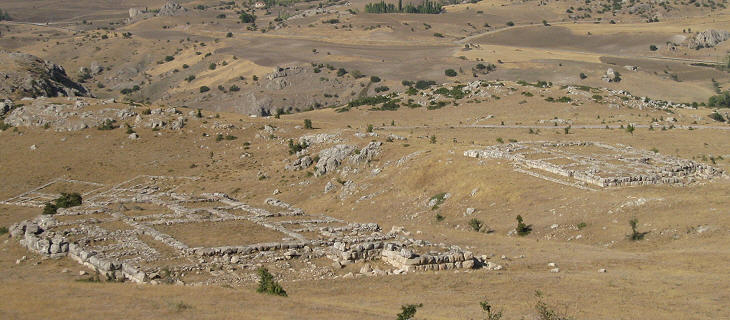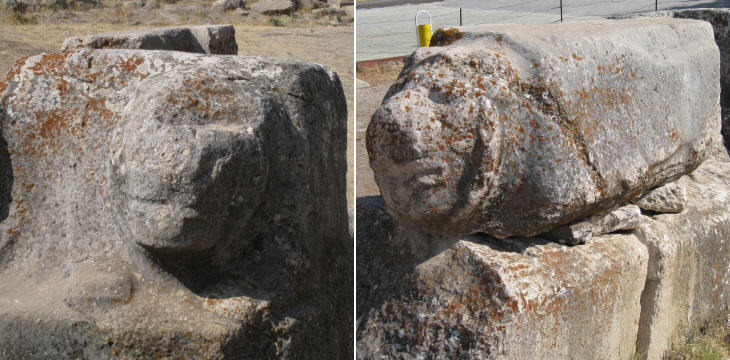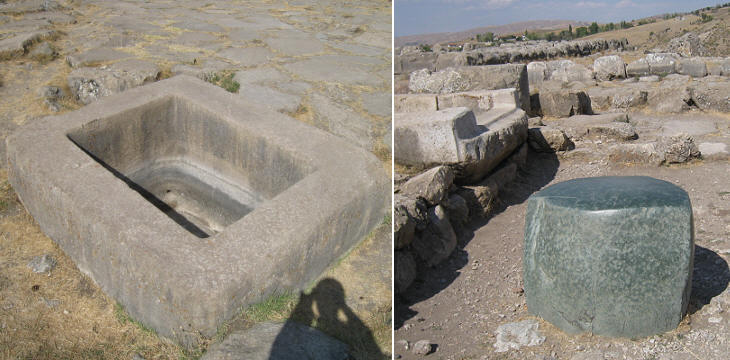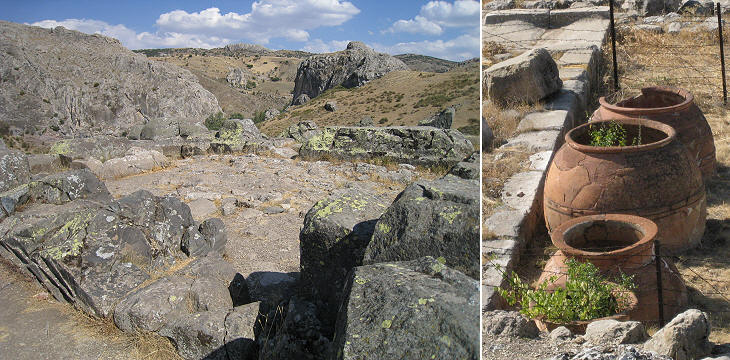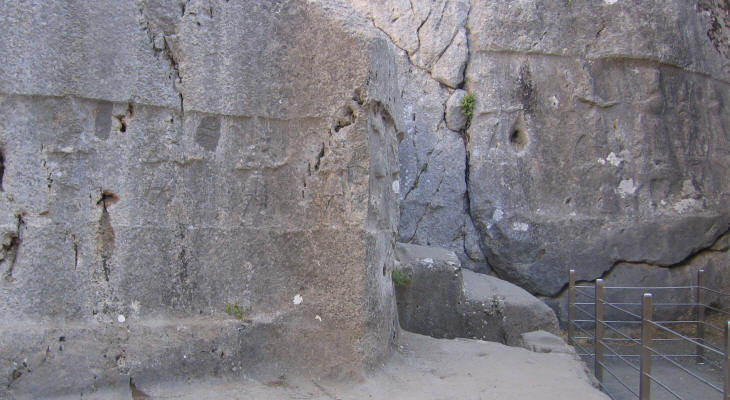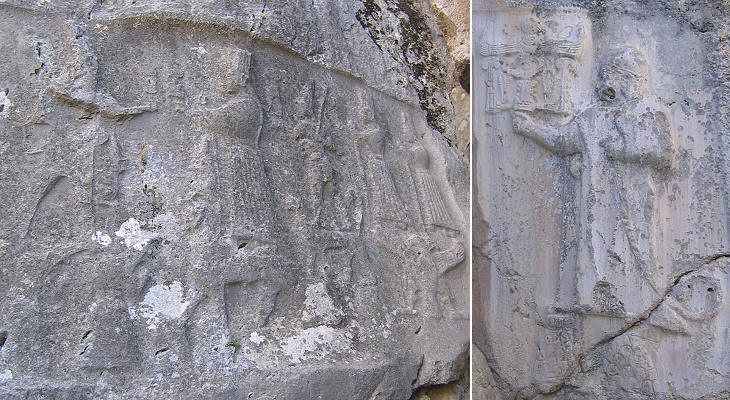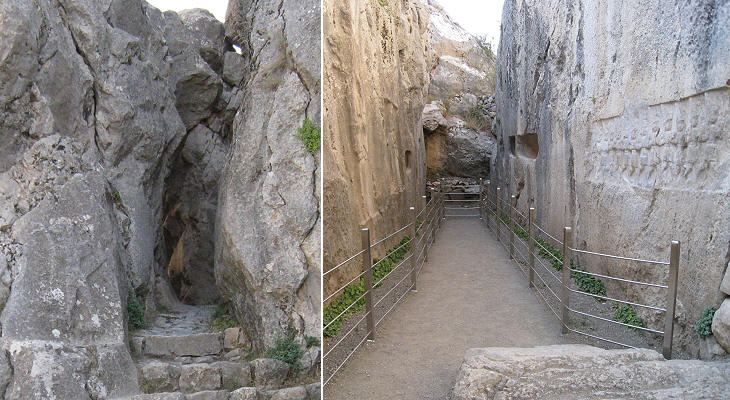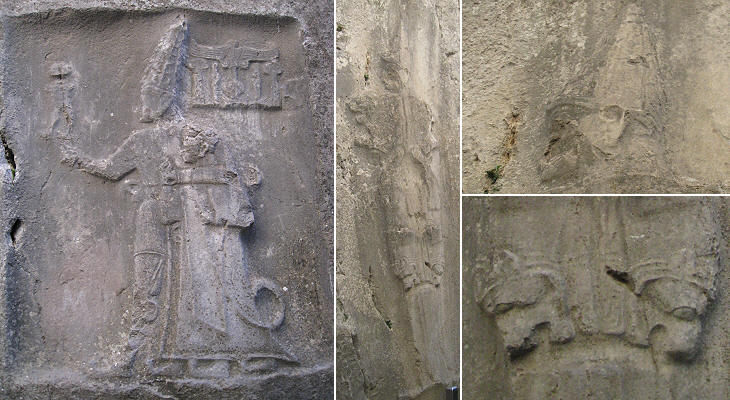  What's New! Detailed Sitemap All images © by Roberto Piperno, owner of the domain. Write to romapip@quipo.it. Text edited by Rosamie Moore. Page added in December 2008. |
 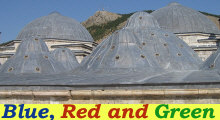 - Hattusa (page two) and Yazilikaya - Hattusa (page two) and Yazilikaya(Ali Pacha Hammam in Tokat) Hattusa was not only the capital of the Hittite Empire, but also its religious centre: archaeologists have found inscriptions with references to "the Thousand Gods of the Hatti-Land".
Excavations have found evidence of several temples in the Upper City near the Sphinx Gate. The foundations of their walls is all that is left; these were made of big limestone blocks. An open courtyard was at the centre of each temple and around it there were several rooms, one of which served for cult purposes (they were identified by finding the base of a statue).
The main temple was located in the Lower City: its entrance was guarded by two stone lions; also in this temple walls and ceilings (which were built with a timber frame filled with mud) have vanished.
Celebrations took place in the temple courtyards. Cuneiform tablets describe such ceremonies in detail; they included some forms of ablutions. A peculiar green stone is thought to have been a gift from Pharaoh Ramses II. In ca. 1274 the Hittites and the Egyptians fought at Kadesh, south of Antioch. They then signed a peace treaty and exchanged gifts.
Two cult chambers were situated at the north-eastern side of the court. The temple was dedicated to two deities (the Weather God and the Sun Goddess). Coloured stones were used for the foundation walls of these chambers. The temple was surrounded by a vast complex of buildings which included several storerooms where large pottery vessels sunk into the ground were found. Yazilikaya
The rock sanctuary of Yazilikaya (rock with writing) lies at the foot of a high ridge east of Hattusa. It contains two cult chambers hidden in the rock and which were not covered by a ceiling. Access to them was restricted and they were not in full view as a series of buildings screened them off. The larger chamber was the first to be discovered: in 1834 French traveller Charles Texier visited the site and made the first drawings of the reliefs; the city was thought to be a pre-Roman town and only in 1906 was it identified as Hattusa.
In the large chamber horizontal strips of rock were chiselled to depict processions leading to a central and larger relief which portrayed the meeting between the Weather God and the Sun Goddess. They both stand on animals which have been identified as panthers (the image used as background for this page shows a modern drawing of the Sun Goddess). A second large relief stands on the opposite wall: it portrays King Tudhaliya IV, in the attitude of paying his respects to the gods. He is thought to be the commissioner of all the reliefs.
The figures do not display any individual characteristics; they all (and in particular the female ones) have elaborate costumes, shoes and headdresses. It is thought that celebrations of Spring were held at Yazilikaya to propitiate a good harvest. The fact that Weather/Storm was a key god of the Hittite pantheon indicates the importance of harvests for the economy. The reasons for the collapse of the Hittite Empire are not entirely clear; there are indications that Hattusa was sacked and set on fire, but probably at that time it was already almost abandoned; a series of poor harvests are thought to have caused the decline.
The small cult chamber was partly filled with earth and its relief sculptures are better preserved. The access to the chamber was guarded by two mythological soldiers with wings and the head of a lion: that on the left is clearly visible. The iconography of this room is split into separate panels which do not seem to be related.
On one wall a large panel shows a deity accompanying/protecting a king: it is probably a funerary relief; a second large panel depicts a most unusual sword; the god portrayed on its handle is the God of the Underworld; this seems to confirm that the chamber was the tomb of King Tudhaliya IV.
A relief portraying a procession of twelve running soldiers was placed at the beginning of the opposite wall: they have been identified as deities, but probably they wore the costumes of the royal guards. The Hittite Empire was not replaced by another well structured nation: Hattusa was abandoned forever apart from small and temporary settlements during the Phrygian, Persian, Hellenistic, Roman and Byzantine periods. You may wish to see a large Hittite relief at Ivriz. Return to page one. Introductory page Safranbolu Kastamonu Taskopru Amasya Turhal and Zile Tokat Niksar Clickable Map of Turkey showing all the locations covered in this website (opens in another window).  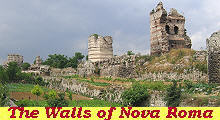  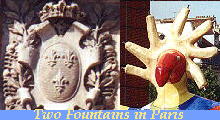 |
